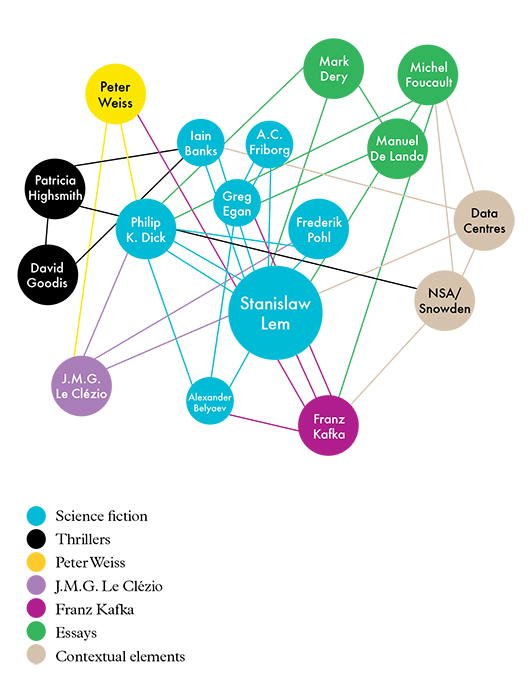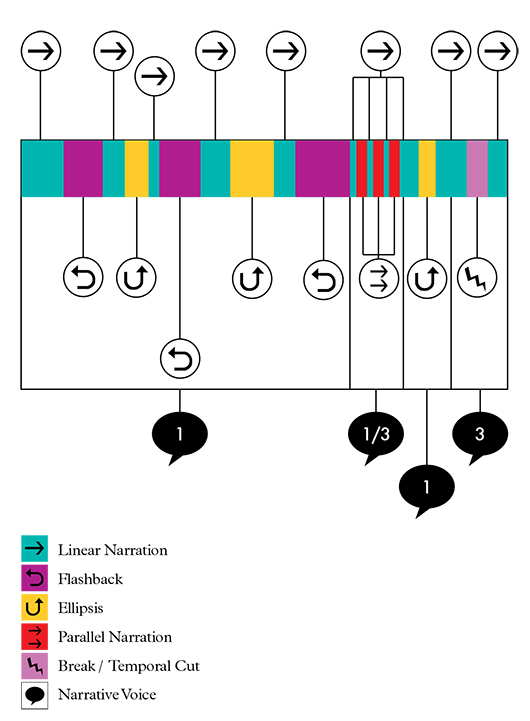A visual data study project (based on a story by Sebastià Jovani)
What follows is the result of a painstaking work of interpretation and recoding of a literary text, namely the short story ‘The Archive’, which author Sebastià Jovani was kind and unselfish enough to allow us to use for the purposes of the present analytic study.
The aim of this study is to offer and to visualise a means of understanding the essential aspects of a literary text, avoiding the possible confusions, or a proliferation of diverging interpretations, to which a conventional approach (whether a formalist or a subjective-hermeneutic one) could give rise, with the resultant added difficulty of accessing the fundamental nucleus of the text and its basic taxonomy.
From this starting point, the text was submitted to different externalised readings, which were in turn parameterised as a series of categoriesand data sets, previously established as fundamental to any textual-literary process of analysis. Namely: the author’s aesthetic and contextual reference points (in the case of those whose traces could be detected in a more or less objective manner, without the need to incorporate further readings to disentangle such influences); the narrative structure (understood here as a temporal sequentiality and a typology of voices); the relations and characterisations of the protagonists of said story; and the evolution of the intensity of the storyline (incident-arcs surpassing the narrative-descriptive average of the events narrated).
The data thus collected was then adapted into a series of visual images and diagrams, accompanied by their corresponding labels. The results displayed on the adjacent pages therefore constitute a reading of ‘The Archive’, which also provides a translation of the story into strategic coordinates that combine data analysis with a graphic synthesis in tune with the requirements for interactivity with cultural objects and phenomena that our media environment increasingly demands. In addition, we hope to offer the most objective possible portraitof the creative process and indeed of the figure of the author.
We wish from the outset to express our thanks to Sebastià Jovani for his collaboration in the project, as well as to all those professionals from the data-analysis team who have taken part in this exercise.
1. Mapped Network of Literary and Contextual Reference Points

2. Temporal Sequentiality and Narrative Voices



Sign in to Granta.com.







